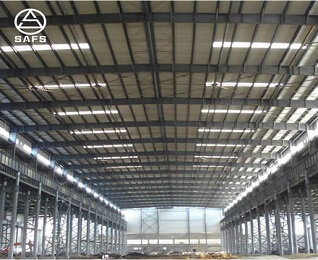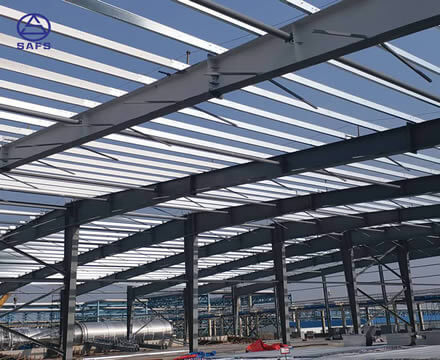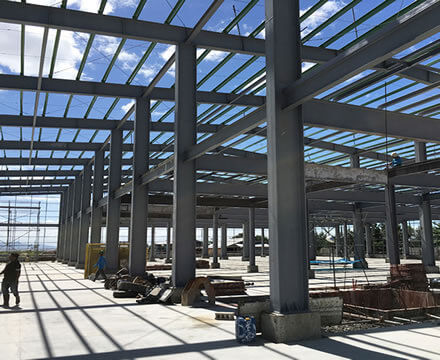Dapeng Town Industrial Park, Tongshan District, Xuzhou City, Jiangsu Province, China
The utilization rate of steel structure workshops is also accompanied by more and more people’s understanding of it, and at the same time because steel structure buildings can be applied to almost all kinds of usage conditions. Whether it is industrial buildings or civil buildings, steel structure buildings can always be done perfectly. Therefore, steel structure buildings have occupied more and more construction markets because of their excellent characteristics. However, in the planning, according to its characteristics, it can better play the role of the steel structure. Steel has a very high thermal conductivity, with thermal conductivity of 50? W? (m℃).
When heated above 100°C, its tensile strength decreases, and plasticity increases. When the temperature reaches 250°C, the tensile strength of the steel increases slightly, but the plasticity decreases, showing blue brittleness. When the temperature reaches 500°C, the strength of the steel drops to a very low level, which will cause the steel structure to collapse. Therefore, when the ambient temperature of the steel structure reaches 150°C or higher, it is necessary to develop heat preservation and fire prevention plan.

The placement of the roof support system should be decided according to the conditions of the arched roof workshop span, height, column network placement, roof structure, crane tonnage, and seismic fortification intensity of the location area. Generally speaking, roof structures with or without purlin systems should be equipped with straight supports. In the purlins system, the large roof panel has three points welded to the roof truss, which can support the upper chord, but the constraints of construction conditions and equipment requirements must be considered. Temperature changes will cause the deformation of the steel structure workshop, causing temperature stress in the structure. When the plant plane standard is large, in order to prevent excessive temperature stress, temperature expansion joints should be set in the vertical and horizontal directions of the plant, and the section length can be implemented in accordance with the steel structure standard. Temperature expansion joints are generally treated with double columns, and longitudinal temperature expansion joints can be set up with rolling supports at the roof truss supports.

The surface of the steel arched roof will rust when exposed directly to the atmosphere. When the steel structure workshop has corrosive media in the air or the steel structure is in a humid environment, the corrosion of the steel structure workshop will become more significant and severe. The corrosion of the steel structure will not only reduce the cross-section of the component but also cause rust spots on the surface of the steel component. When the component is stressed, it will cause stress concentration and premature failure of the structure.

The construction of light steel structure arched roof is mainly manifested in the following four aspects: scale, line, color characteristics of steel structure: the steel structure is made of steel plate hot-rolled steel or cold-worked thin-walled steel, 1. Material High strength and good plasticity and toughness 2. Uniform material 3 Steel structure is simple to manufacture, short construction period 4 Steel structure is lighter 5. Corrosion resistance is poor 6. Heat and fire resistance 7. The deformation of steel structure sometimes controls the design, steel structure The scope of application includes 1. Large span structure 2. Heavy plant structure 3. Structure affected by dynamic load 4. Tower structure and high-rise building 5. Light steel structure